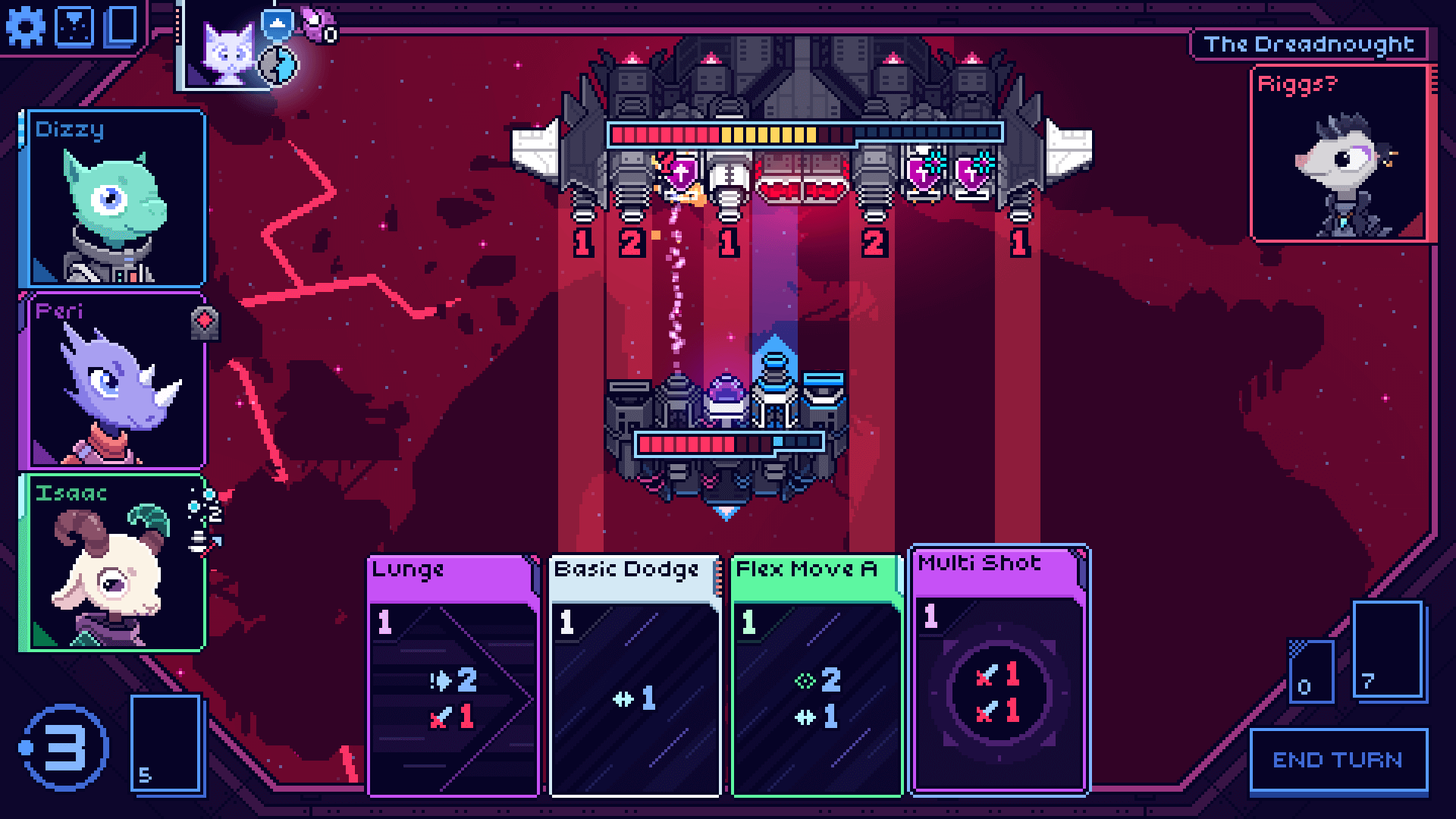Game Theory: The super-charming Cobalt Core got us through the holidays this year
Cute critters, cards, and occasionally cruel spaceship-based combat make Cobalt Core one of the best indie titles of 2023

Every Friday, A.V. Club staffers kick off the weekend by taking a look at the world of gaming, diving in to the ideas that underpin the hobby we love with a bit of Game Theory. We’ll sound off in the space above, and invite you to respond down in the comments, telling us what you’re playing this weekend, and what theories it’s got you kicking around.
There are, by our rough estimate, about 8 billion indie games in the Steam store right now where you play cards to do things. Cards representing magic spells; cards standing in for social manipulation techniques; cards that talk back to you and engineer complicated plots in an effort to murder you and take over the world. Cards that represent the elegant Australian reed warbler! Point is, it takes a lot, at the moment, for a card-based roguelike game to rise to the top of the big pile o’ cardboard.
Luckily for Cobalt Core, the new (card-based) title from Rocket Rat Games, it has a lot in its corner. Incredibly cute character art! A surprisingly interesting story! And, most importantly, one of the most engaging implementations of card-based combat we’ve run into in a minute, merging the moment-to-moment spaceship fighting of a game like FTL with the tense deck-building action of a game like Slay The Spire.
(And, yes, sometimes trawling the latest indie hits feels a bit like watching people play Frankenstein, smashing together the best parts of great old games to create some new time-devouring monster. But if these mash-ups get us fantastic games like Cobalt Core, or last week’s “Frostpunk but it’s a roguelike” title Against The Storm, who are we to complain?)
As with so many games built in the Slay The Spire mold, every turn in Cobalt Core asks you to handle two conflicting problems: How you deal with the damage coming toward your own ship (helpfully telegraphed when your turn begins), and then how you deal out enough damage of your own to destroy your enemies so they’ll stop throwing all this awful stuff at you. With a limited number of cards in your hand, and a limited amount of energy with which to play them, you’ve got to line up your cannons, build your shields, and maneuver your ship away from the worst of the attacks, all so you can turn your adorable enemies into adorable murdered space dust.
As with so many of these games, the rigor builds up as you play, and new ideas and mechanics are introduced. The biggest aspect is unlocking your various crew members, three of whom can be brought along on every run. Each character represents 20 or so cards that can be added to your deck as a game progresses, with that library of cards suited to their particular strengths. So a trip that features Isaac (focused on drones), Riggs (movement and card draw), and Drake (big attacks that can shut down enemies, but hurt you, too) is going to play out much differently than one that puts its focus on Dizzy (shields) or Peri (conventional attacks with a high degree of mobility). The core pleasure is the same as it is in most of Cobalt Core’s deck-building ilk—i.e., creating a stack of cards that’s an absolute murder machine in disguise—but the multiple avenues it presents for success gives it an extra dose of brain-engaging heft. Massive tank; self-harming glass cannon; drone-based laser lawnmower: All of them can work, provided you’re tuning your deck correctly.
Cobalt Core ate up a decent chunk of our holiday play time over the last few weeks. But will we still be binging the game two weeks from now? Arguable. (The structure is a tad on the repetitive side, even if we’re enjoying delving into its story of time loops and space pirates.) But we’re having a blast with it right now—and one of the nice things about the current high quality of games populating the roguelike genre is that you can make something that doesn’t have to hold player attention for months, or even weeks; that can recommend itself on those first 10 or 20 hours alone, when you’re learning a new set of mechanics, and seeing all the ways a game like this can unfold. That pleasure, of discovery maturing into understanding, is the fun of the roguelike space, and Cobalt Core delivers that satisfaction with an abundance of fun, smarts, and charm.